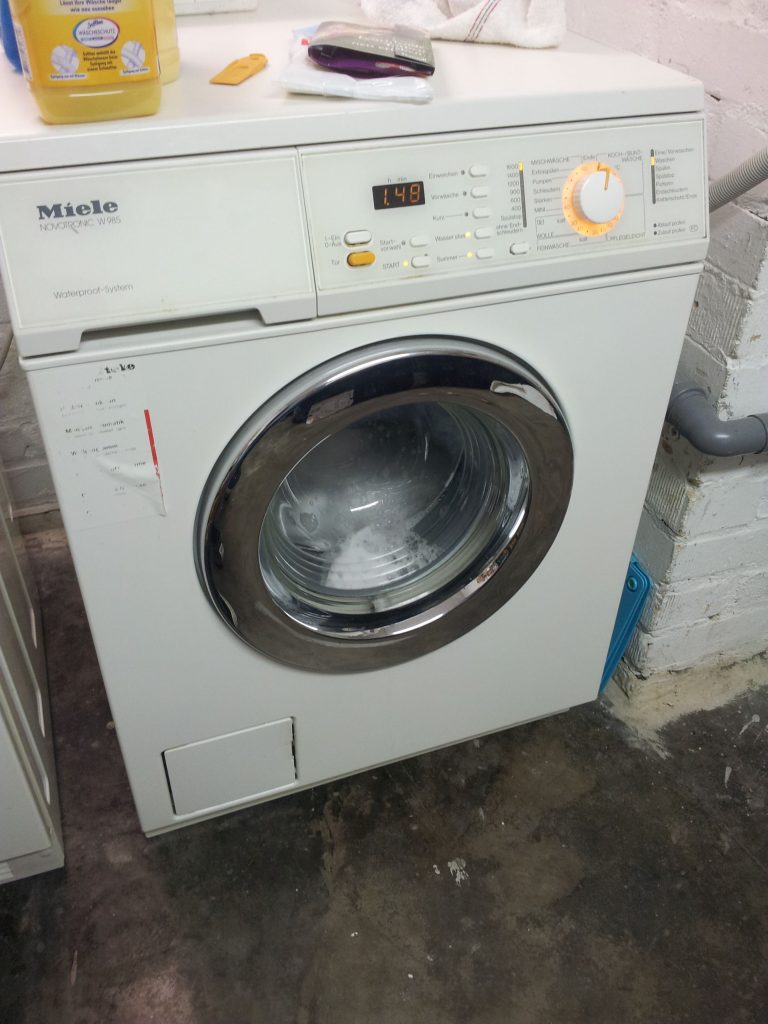
6 Ways to Clean your Washing Machine
If your washing machine has become smelly, it’s high time for you to learn how to clean it. It is not the most glamorous of tasks, but giving your washing machine a good cleaning at least once a year will keep it working in peak condition and avoid you the stress of having to look for the washing machine guy, blocking a slot of your time to receive him and further cater for expenses of labor and parts.

1. Vinegar and Baking Soda
Mix ½ cup of baking soda with 1 liter of vinegar and set the water temperature to 90ºC on a long cycle. Vinegar and baking soda are effective at removing limescale as well as deodorizing. However, vinegar is only a mild form of acid and will not eliminate all of the molds. If your washing machine is extremely dirty, use the stronger elements recommended below.
2. Enzyme Detergent
Using the dose for large loads as mentioned on the label, you have to set the water temperature to 90ºC again and press the button for the largest load.
I would recommend you choose powdered enzyme detergents over liquid ones as the powdered ones contain more enzymes and you can clearly see them in the powder. Manufacturers usually offer powdered detergents that contain Lipase, Protease, Amylase, and Mannanase.
3. Oxygen Bleach
While cleaning your cloth in the machine, you can also use powdered oxygen bleach mixed with your usual detergent. The oxygen will bubble up and help to break down odors, germs, and dirt. But note that these detergents are not safe for use on wool or silk.
4. Citric Acid
Add ½ cup of baking soda and 1 cup of citric acid. Choose the longest wash cycle and set the water temperature again to 90ºC. The citric acid will remove limescale, soap scum, and buildup. It is stronger than vinegar and will work best for machines that have accumulated lots of buildups. The baking soda alongside the citric acid will also remove odors from your washer.

5. Hydrogen Peroxide
Hydrogen peroxide takes longer to work. So, in a top loader, you will leave it to soak in the drum for at least three hours. And, in a front loader, you may need to run it twice in your machine as soaking for three long hours may not be possible. Nowadays, the new front loaders do not have a soak cycle.
Hydrogen peroxide removes limescale, kills mold, and acts like an anti-viral and anti-bacterial.
You will need to simply use 1 liter of hydrogen peroxide with water (at 90ºC on the longest wash cycle. Do not worry, it will not leave behind toxic fumes and residue and it will not harm the environment as it will break down into oxygen and water.
Careful note: When you purchase hydrogen peroxide, it should be in the form of 3% diluted liquid solution. DO NOT buy any solution above 3% concentration because of safety risks. Some stores can be selling concentrated solutions above 3%, but these are for industrial or commercial cleaners who will dilute the solution to make larger quantities to be used on a larger scale.
Storage: Hydrogen peroxide should be kept in a dark place and cannot be stored for more than a year after opening as it will lose its effectiveness.

6. Chlorine Bleach
Use 1 liter of chlorine bleach simply with cold water or warm water below 40 ºC as chlorine bleach loses its effectiveness at higher temperatures. Chlorine bleach is however toxic for the skin, eyes, mouth, and lungs (asthmatic people are at risk). So, be careful to use a mask, hand gloves and try not to be exposed too long with that product. After leaving that solution to do its work on a long wash cycle, you will be satisfied to see that there is no longer mold in your washing machine. Well, that’s only a short term solution! The roots of the mold will still be alive and will regrow in a short period. Further, the limescale will still be there. So, this is not the best option, unless you badly need a short term benefit.
Now, you know of all the available means to clean your washing machine. I hope this post will be beneficial for you. Have a nice wash!
And, remember to write down your comments below…

1 thought on “6 Ways to Clean your Washing Machine”